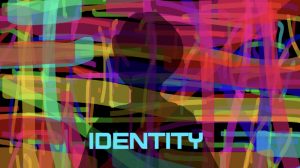
“Identity” by Benjamin Cudmore
Identity is the perception of one’s self. So what is the essence of identity? Elements of culture such as different types of median can influence one’s identity. Fashion trends exemplify an impact on identity. What is considered fashionable will limit one’s choices in how one dresses. My generation does not wear doublets or silly feather hats when hanging out with friends. The clothes one wears are an extension of one’s identity. When I try to think of someone I know, I typically recall how they dress. So as fashion tastes change, so too does a person’s identity. Taste in music can experience a vast change over time as well. When radio stations or music streaming services play “popular” music, absorbers of this media are subjected to taking in only the songs the radio plays and will begin to enjoy them. As media constantly changes, identity does as well. When looking back at old videos of myself, I recognize that I have changed so much in just a few years from everything that I absorbed and discovered during that time.

Your example of looking back at one’s self was a strong representation of how fast identity can change. I think of my old instagram I created in fifth grade and the trends that were popular at that time like the “stay fierce” hand over the face and clipping feathers into hair. However, it also begs the question if this rate of change slows as we age. For example, my mom’s facebook has remained stagnant for many years. She looks and acts similarly as she has reached a point in her life where she is less influenced by new trends. She likes the clothes that she likes and doesn’t change much, so I wonder if our generation will feel the same. Ideally, yes. Yet, we cannot know because we were much more confronted by media than previous generations.
I agree with everything you said, especially about how fashion trends can impact identity. Someone’s appearance and style can be a great opportunity to express their identity visually. Hair dye, tattoos, clothing colors, piercings, and clothing brands all have a part in someone’s personal style and can reflect that person’s identity/personality. The way someone dresses communicates to others how they portray themselves in social situations, which is often stressed by social norms and expectations. Flappers of the 1920s all felt passionate about women’s rights and freedom and used their hairstyles and clothing to unify themselves and create a collective identity.
I found your decision to choose fashion as a marker of identity interesting. I also wrote about fashion a little bit in my response to this text. I wanted to expand on one particular point that you made where you said “What is considered fashionable will limit one’s choices in how one dresses.” While I agree this is often true for a majority of people I think it is also useful to look at those who reject the current trends and form their own identity and community through their “otherness”. For example when you pointed out that no one in our generation really wears doublets it made me think of some of the vintage dressing youtubers I have come across online who form their identity partially around the fact that they wear “out of date” clothes. Ultimately, fashion seems to be a vital piece of identity in both conformity to or rejection of current trends.
I like that you mentioned music as a way that people may reflect certain aspects of their identity. I think music can be quite a valuable way to gain insight into one’s identity and can bypass false identities people tend to display. People cannot help what music they enjoy, and often, something about music’s message. lyrics, or sound are what attract listeners. Knowing what music a person listens to can speak to a person’s interests passions, fears or desires. I like to think of music as an organic display of identity because people will always tend to gravitate towards music that they truly enjoy, thus making it harder to display a misleading self image through this medium.
Interesting use of imagery to reflect the woven tapestry of your identity formation. Thanks for the illustration! The use of imagery reflects the opportunities available for expressing ourselves through multimedia rather than “only” words.